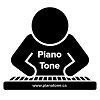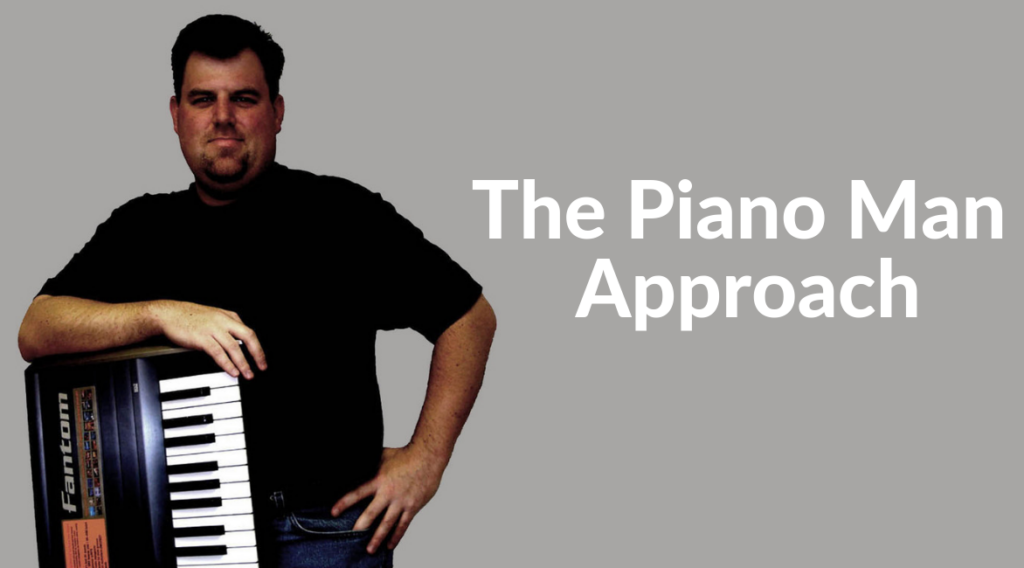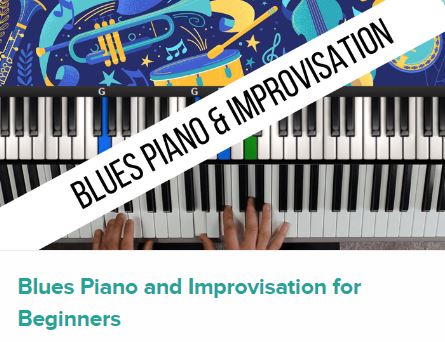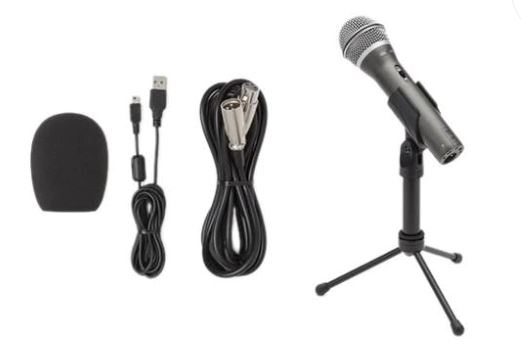
This is my review on a mic that I bought a few months back, and I’ve been super happy with – the Samson Q2U Dynamic USB mic. Now I’m in no way a specialist on mics, and there are TONS of technical reviews out there on this mic that I am not at all qualified to be trying to duplicate, so there won’t be any fancy demos or anything like THAT in this review – I just wanted to quickly talk about all the mics I’ve tried on my channel so far, and how the Samson Q2U has become my go-to mic for satisfying ALL of my microphone needs.
Condenser vs. Dynamic Mics
So just in case you’re not familiar with the basic difference between:
Condenser Mics

Dynamic Mics
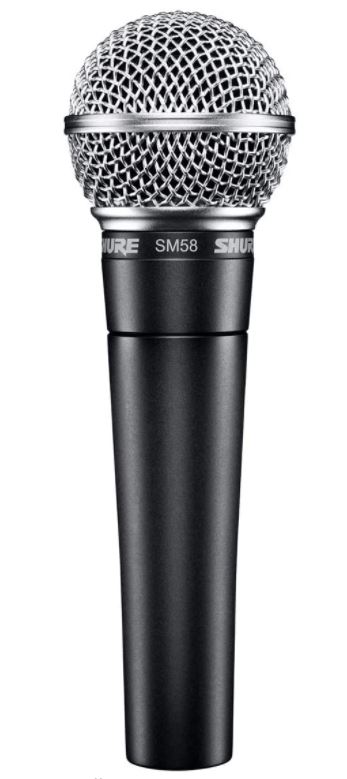
Generally speaking, a condenser mic is much more sensitive to sound; it picks up more detail and typically from more directions and from farther away. These mics are very popular for vocals, both singing and spoken word, but they’re really best suited for either a controlled studio environment, or a very QUIET environment. And the biggest thing to note with these mics is that they require what is called “phantom power” to work. So if you ever look at a device like a mixer or an audio interface you will often see a switch or button labelled “48V”:
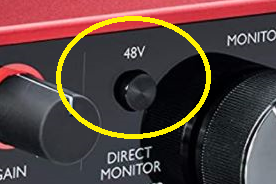
This means that activating this switch or button will turn on phantom power, and start applying that power to the mic inputs on the device. And condenser mics are also typically much more fragile than dynamic mics.
So dynamic mics are typically much LESS fragile, and less sensitive; especially to background noise, and they also typically capture sound from a much smaller area (they basically capture sound from directly in front). And dynamic mics do NOT need phantom power, so you can plug them into just about anything. Dynamic mics can still totally be used for vocals, both spoken and singing, and because they aren’t as fragile, dynamic mics are pretty much the ONLY mic you’ll ever see on a stage for a live performance. So right out of the gate, especially for casual home users, a dynamic mic is already more versatile than a condenser.
Piano Tone’s Microphone “Journey”
So here is the history of all the mics I have used on my channel.
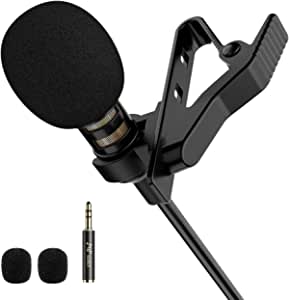
When I first started my channel, I bought a VERY cheap (and not very good quality) lapel mic off Amazon – this mic got the job done for recording my videos, it did need phantom power to operate, but really didn’t sound all that great.

For my early SINGING videos, I used a very old Shure 57 dynamic mic that I used to use for gigs over 30 years ago. (The one pictured is a newer version, the Shure SM58).

As my channel got more popular I wanted to get a better mic so I bought an Audio Technica AT-2020 condenser mic, which is a fabulous mic; except it turned out to be far too sensitive for my use case. One issue is that I live in a small apartment so it picked up a lot of surrounding noise, and actually for playing keyboard and singing at the same time, it was so sensitive it picked up a lot of key noise even if the key bed wasn’t overly loud, so I wasn’t able to use it for singing and playing videos.
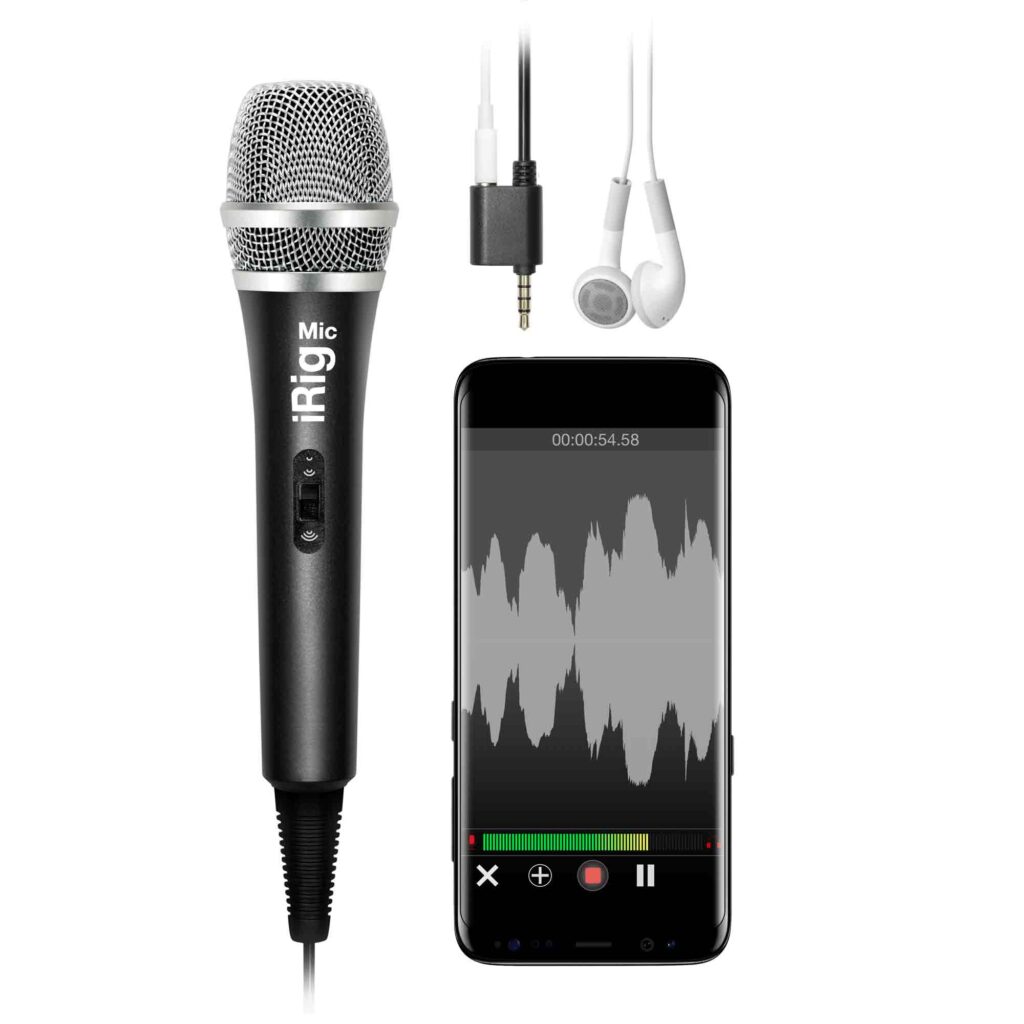
Now I also on occasion have the need to record vocals directly into my iPad, usually to narrate a screen capture video while demonstrating an app, so for THAT I bought an inexpensive iRig microphone, that’s meant to connect straight to my iPad.
Now I Use ONE Mic – The Samson Q2U!
But now, my Samson Q2U has replaced ALL of these mics, and it’s the only one I ever use; and THAT’s the reason that I like this mic so much – it’s super versatile! And the added benefits are it’s not that expensive, it sounds great, and it actually comes with some nice useful accessories.
The Samson Q2U Is SUPER Versatile
So what do I mean by “versatile” – how is this one mic able to replace all my other mics?
- The Q2U Is A Dynamic Mic:
- It doesn’t need phantom power, so I can connect it to pretty much anything – and that includes my new Yamaha PSR-EW425 keyboard and my new Yamaha DGX-670 digital piano, both of which have microphone inputs (I wouldn’t be able to connect a condenser mic to these keyboards because they don’t supply phantom power)
- Since it’s dynamic, it’s not overly sensitive, so it doesn’t pick up noise from my neighbours, and it doesn’t pick up key bed noise if I’m playing and singing at the same time, so that means I can use it for spoken word or singing, including playing keys and singing at the same time
- The Q2U is ALSO A USB Mic:
- That means I can also connect it straight to my iPad
- For recording talking vocals while narrating a screen capture video while I demo an app
- For recording high quality direct singing vocals into GarageBand on my iPad; before I got this mic, to record singing vocals I had to connect my Shure dynamic mic to an audio interface first, and then connect THAT to my iPad. And, I can also connect it to a pc to do the same thing – record singing vocals directly into a DAW, or narrate a software demo, once again without needing that external audio interface.
- That means I can also connect it straight to my iPad
Connections
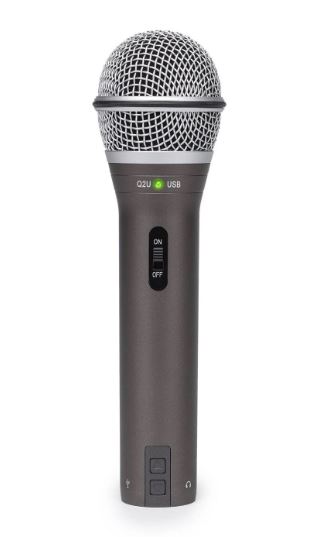
It has a power switch which is always a nice feature; a lot of cheaper dynamic mics don’t have that (they are always on).
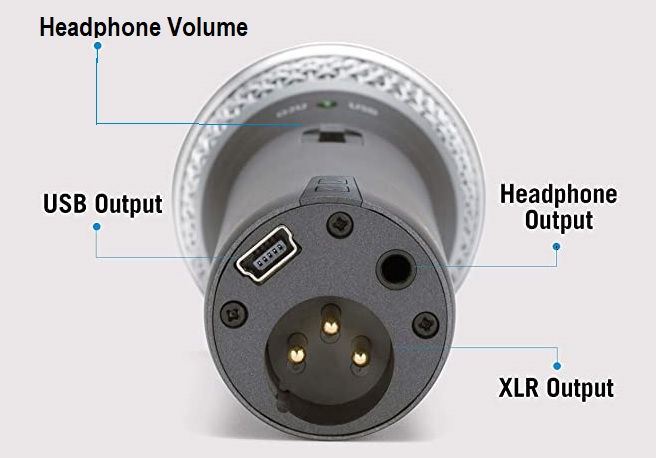
All the connections are on the bottom – so you can see a standard XLR output which is what you would use to connect to audio equipment, and then there is also a USB output which is how you would connect to a device like a pc or a tablet.
Another cool feature is a headphone output; this is super useful when I connect the mic to my iPad to record narration or singing, because this allows me to hear what’s being recorded; and there are volume buttons for this headphone out as well – also super handy!
Accessories
So I mentioned that the Samson Q2U comes with some useful accessories; it actually comes with everything you could possibly need; mine came with:
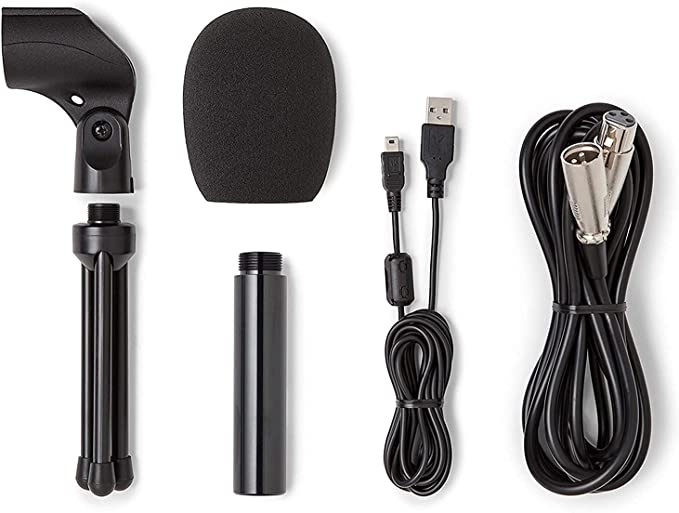
- An XLR audio cable for connecting to audio equipment (if you need a 1/4″ connection, you will need to buy either an XLR to 1/4″ cable or an XLR to 1/4″ adapter)
- A USB cable for connecting to a pc or tablet
- A wind screen to help minimize popping sounds
- It also comes with a nice little tripod, and a generic mic clip that will fit onto any standard mic stand – and the mic clip is kind of important, because this mic is unusually big around – it actually won’t fit into a generic sized mic clip
The ONLY negatives I have about this mic or the accessories, is that the fact that you need an oversized mic clip is a bit strange, but the one that comes with it is well made; I use it constantly and it’s not showing any signs of breaking anytime soon. And the only other negative is that I found the XLR cable to be a TINY bit on the cheap side; it does work fine, I’ve used it for all my channel’s videos since I bought the mic – but the connection seems to be a tiny bit wobbly – but like I said, it’s been working just fine so not the end of the world. And XLR cables are readily available if I ever need to replace it.
Samson Q2U Dynamic USB Mic – THE VERDICT

So what’s my opinion on the Samson Q2U mic? I love it! It sounds really good on spoken word and singing videos, it is super versatile, it doesn’t cost a lot (only about $65USD on Amazon at the time of this review), and even comes with a bunch of handy accessories.
So if you’re looking for a mic that won’t break the bank and can fulfill a lot of different needs, I think the Samson Q2U is a great choice.
So if you want to check out current prices in your area on the Samson Q2U, the Audio Technica AT-2020 condenser mic, or the new version of my old Shure dynamic mic (the SM58), please click on my affiliate links below. I’ve also left some links to piano training I recommend. So thanks for stopping by, happy mic shopping, and have an awesome day!
I have included links below to Amazon so that you can check current pricing – please note that as an Amazon Associate I earn from qualifying purchases
Amazon Links:
Audio Technica AT-2020 Condenser Mic
Piano Training I Recommend
If you are looking for an app or a course to get started on learning piano, I would highly recommend checking out one of the online courses I’ve taken (one I’m still taking) and had tons of success with: The Piano Man Approach, PianoForAll, Bird’s Piano Academy (beginner blues) or Piano In 21 Days
